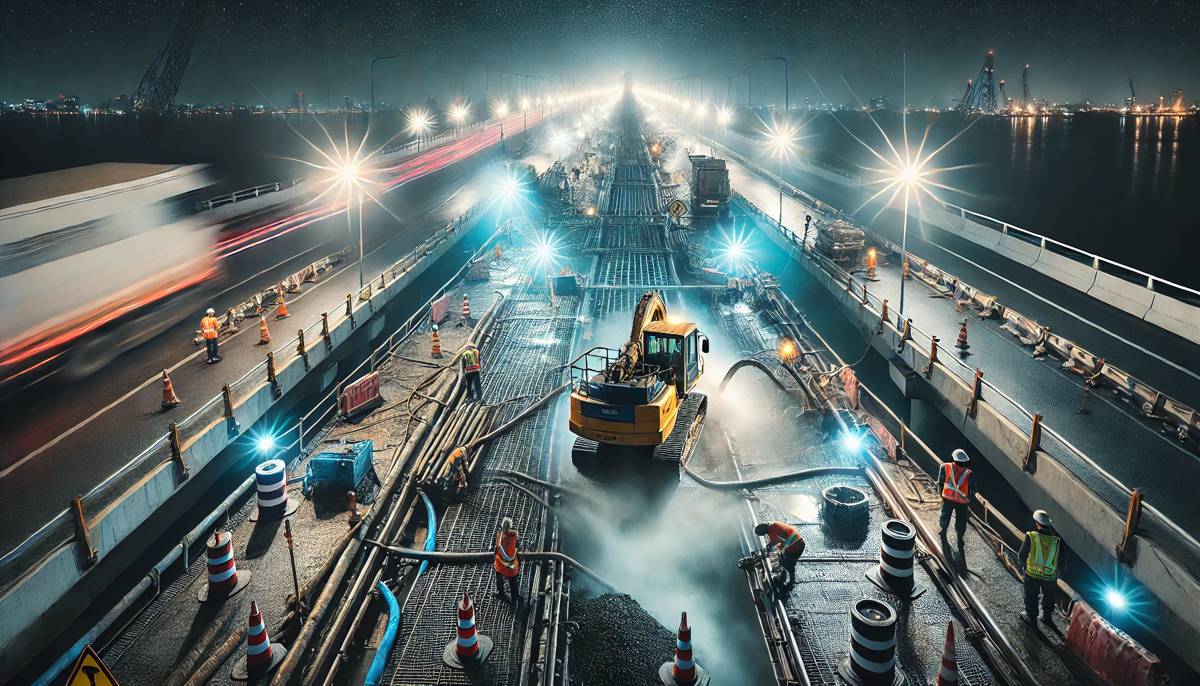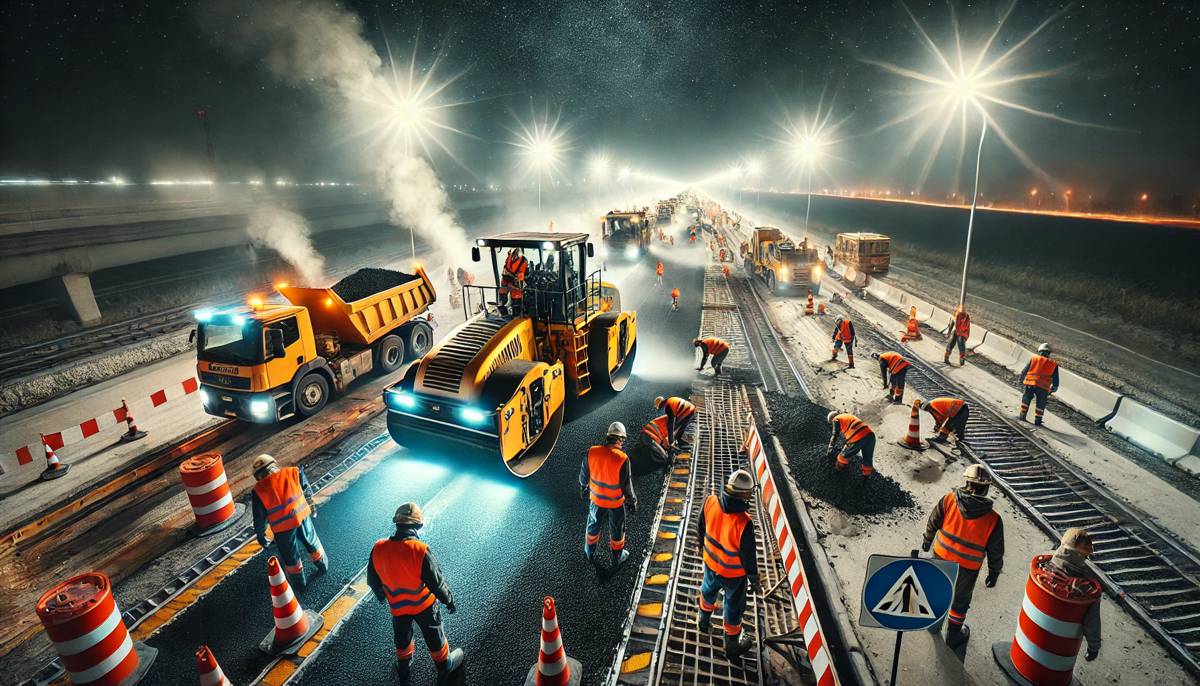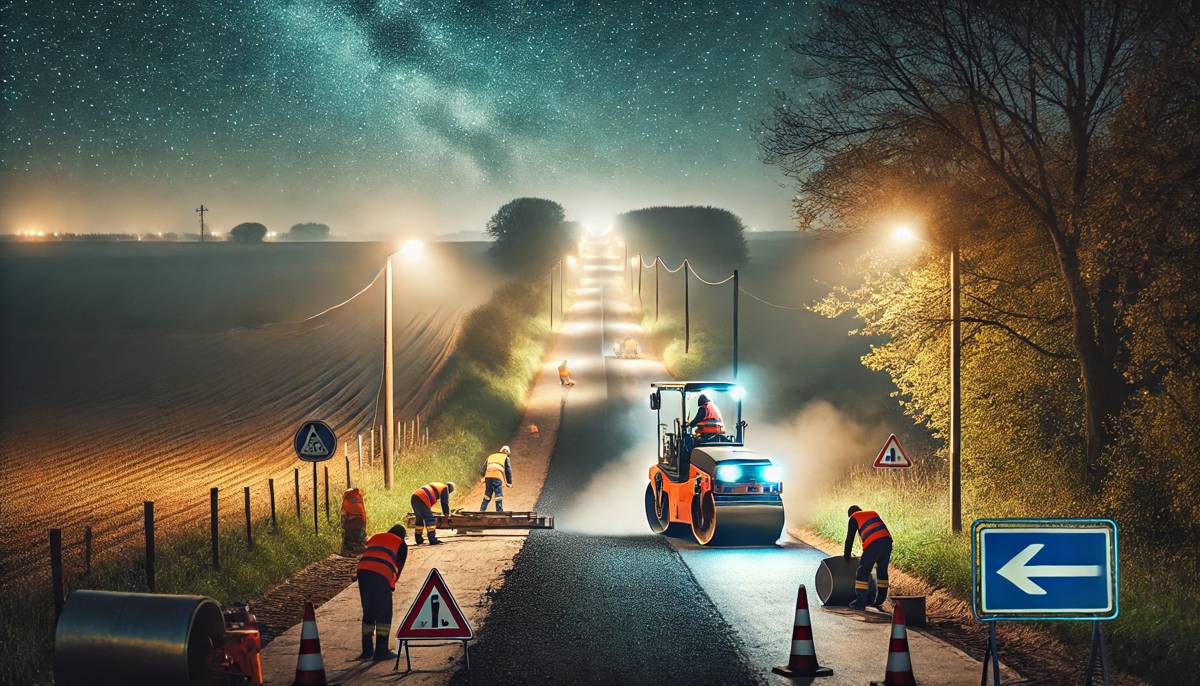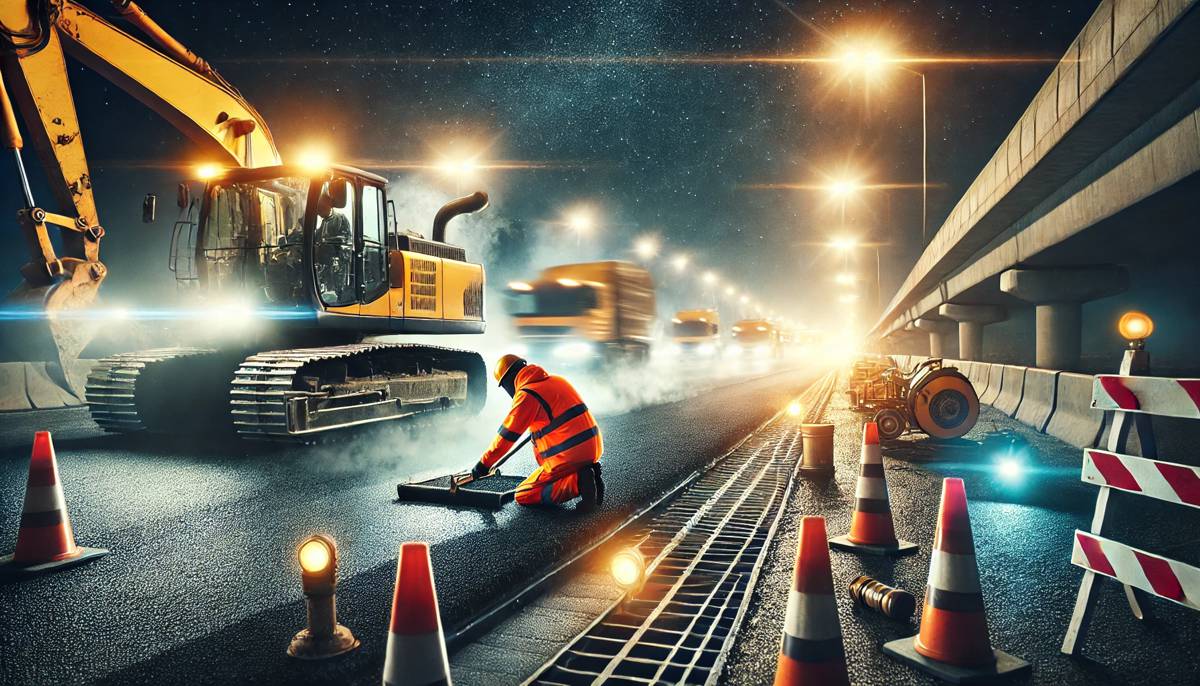Legal and Safety Considerations for Nighttime Highway Construction
Nighttime highway construction presents a unique set of challenges for crews working in the dark, often just feet away from fast-moving traffic. Reduced visibility and fatigue create a high-stakes environment where one misstep can lead to severe consequences.
Workers must remain alert, agile, and highly focused, all while navigating shadows cast by temporary lighting and the constant hum of vehicles speeding past.
Every measure counts when safety hangs in the balance. From reflective gear to strategically placed barriers, construction teams rely on every precaution to protect themselves and those on the road. In this demanding setting, preparation and precision are non-negotiable.

Key Risks in Nighttime Highway Construction
As night falls, the challenges on a highway construction site grow sharper. With limited visibility and constant traffic, every move requires precision. The darkness, combined with the unforgiving pace of highway work, transforms even small risks into serious threats.
- Low Visibility: Shadows obscure hazards, making it tough for workers to see potential dangers and for passing drivers to notice crews in time.
- Fatigue: Long, late shifts lead to slower reaction times, leaving workers vulnerable to accidents when they need to be most alert.
- Environmental Strain: Cooler nighttime temperatures and unexpected weather impact equipment performance and worker comfort, adding an extra layer of risk.

Legal Responsibilities and Accident Liability
Nighttime highway construction doesn’t just pose unique safety risks. It also creates serious legal responsibilities for construction firms. For safety professionals and construction leaders, understanding these obligations is essential.
Understanding Liability in the Event of Accidents
Accidents on nighttime construction sites can carry severe legal consequences. Injuries from equipment malfunctions, falls, or vehicle collisions don’t just impact workers—they can lead to lawsuits that affect a company’s financial health and reputation. Workers injured on the job seek legal representation, for instance, with the help of wyantlawoffice.com, allowing them to hold employers accountable if negligence is suspected. This underscores the need for firms to prioritize safety rigorously, as it minimizes accidents and potential legal fallout.
To stay informed on potential liability issues, construction firms can benefit from industry insights and legal updates. Shawn Grant, senior consultant with Accelerate Now, notes that law firms specializing in construction accident cases use digital platforms to disseminate information. Such will help not only workers but also companies, providing information on what can happen. For example, a website with an article about the possible cases an injured worker may file can give construction companies a glimpse of their legal liabilities. In turn, this can make companies more proactive in promoting a safer workplace to avoid legal setbacks.
More so, establishing liability can be complex, especially on busy highway sites where multiple contractors, vendors, and state agencies might be involved. To protect themselves, firms must document all safety practices meticulously, from safety training records to equipment maintenance logs. This level of detail demonstrates a commitment to safety and can be invaluable in the event of legal proceedings.
Federal and State Compliance Requirements
Federal and state regulations, led by the Occupational Safety and Health Administration (OSHA) and other agencies, set clear standards to ensure worker safety in high-risk conditions. Nighttime construction often requires specific measures, such as adequate lighting, high-visibility gear, and enforced breaks to combat fatigue. These requirements are more than just guidelines; they are essential protocols that construction firms must integrate into every project plan.
Firms that fail to meet these safety standards face significant penalties. Beyond fines, regulatory violations can lead to increased scrutiny of future projects and, in some cases, restrictions on project approvals. For companies that prioritize compliance, these guidelines can serve as a blueprint for safer, more efficient operations. Regular audits, compliance training, and equipment checks ensure that workers are protected and that firms uphold their legal responsibilities effectively.

Safety Practices for Nighttime Highway Construction
In the high-stakes environment of nighttime highway construction, safety is paramount. Workers operate in low visibility, close to fast-moving traffic, where one misstep can lead to serious accidents. Implementing effective safety measures protects workers and ensures that each project runs smoothly, even in the most challenging conditions.
Optimized Lighting for Work Zones
Proper lighting is essential to ensure visibility without creating hazards for oncoming traffic. Firms can use mobile lighting towers and floodlights to illuminate the entire work zone, eliminating shadows that may obscure hazards. By positioning lights carefully to avoid driver glare, construction firms create safer environments where workers can operate machinery and handle equipment with a clear line of sight, reducing accident risks.
High-Visibility Gear and Reflective Equipment
High-visibility clothing, such as vests, helmets, and jackets, enables workers to stand out in low-light conditions, making them easily visible to drivers. Reflective tape added to equipment, barriers, and tools extends visibility across the worksite, creating clear markers that reduce the chance of unintended contact with heavy equipment or passing vehicles. By using high-visibility gear that meets industry standards, construction companies enhance safety and create a more controlled environment.
Barriers and Traffic Control Devices
Physical barriers, cones, and warning signs clearly outline work zones, forming a protective boundary between workers and live traffic. Rumble strips and flashing lights alert drivers to slow down upon approaching the construction area, reinforcing the need for caution. Traffic control devices, such as reduced speed limits, guide vehicles away from active work areas, significantly lowering the risk of vehicle-worker collisions and providing a safer perimeter for construction teams.
Fatigue Management Strategies
Fatigue is a major risk in nighttime construction, and companies can counter it through structured shifts, mandatory breaks, and hydration stations to keep workers alert. Encouraging open communication allows workers to report fatigue, while monitoring systems can detect early signs of exhaustion. By proactively addressing fatigue, construction firms maintain a high level of worker focus and safety, reducing the likelihood of errors or slow reaction times due to tiredness.

Wrapping Up
Nighttime highway construction is no easy task—it demands rigorous planning, unwavering attention to safety, and a commitment to protecting every worker on site.
Each element, from lighting setups to high-visibility gear and fatigue management, plays a critical role in creating a safe, controlled environment where risks are minimized. By investing in these practices, construction firms meet regulatory standards and foster a culture of safety that prioritizes the well-being of their teams.




















